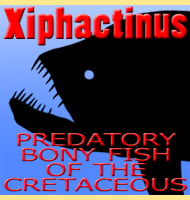Veridagon
In Depth Bearing a strong resemblance to the much better known Enchodus, Veridagon is a genus of predatory fish that lived during the late Cretaceous. The name Veridagon translates as ‘true Dagon’, and was picked because the name Dagon by itself had already been used for a genus of butterfly. Anyone familiar with the works … Read more
